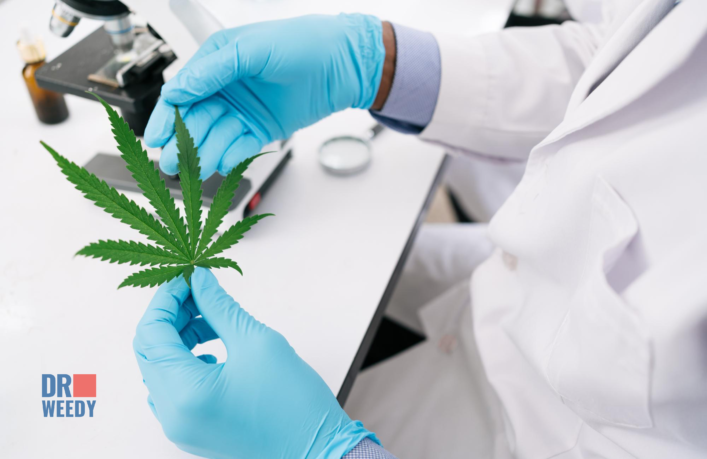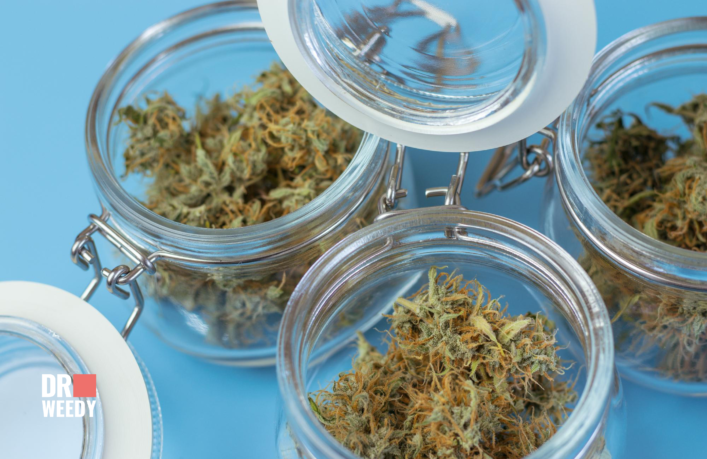Medical Marijuana Pros & Cons

The use of medical marijuana is not a new treatment. The first mention of it dates back to the third millennium BC when the plant was considered an effective pain reliever, as evidenced by written sources from ancient China.
Marijuana began to be considered a medicine much later in the Old and New World, at the turn of the 19th and 20th centuries. At that time, it could be bought quite legally (as could cocaine or opium, which were also on the list of medications). However, after a strict ban on the use and inclusion of cannabinoids in the Schedule 1 list at the state level in the United States, its use decreased. Nevertheless, recent studies suggest that weed users in the United States account for more than 8% of the total population. According to the United Nations Convention on Narcotic Drugs, adopted in 1961, cannabis is included in the list of plants containing drugs. The Convention obliges the States Parties to control its cultivation strictly.
Today, medical marijuana is once again a hotly debated topic because the debates on its legalization are ongoing in many countries. In the United States, for example, although it is legal in many states (such as California, Oregon, and other states) and can even be used not only for medical purposes, the pros and cons of medical marijuana have yet to be agreed upon at the state level by the government.
What are the arguments for and against medical cannabinoids? Let’s examine them.
MMJ’s Pros: Healing and More

Disputes over the legalization and decriminalization of marijuana are ongoing around the world. Nonetheless, dozens of countries have softened their laws. In many countries, people can carry marijuana for medical use and grow plants at home. Specifically, marijuana is fully or partially legal in more than 40 countries worldwide, while around 14 countries use marijuana for medicinal purposes. For the first time in 60 years, WHO experts have recognized that marijuana preparations have therapeutic potential for treating pain and other medical conditions, such as epilepsy and spasticity associated with multiple sclerosis.
Medical cannabis helps alleviate the following pathological conditions:
- Pain: Marijuana is not so much an anesthetic as a relaxant that helps patients cope with pain and also relieve inflammation.
- Muscle tension: Cannabis is used for muscle relaxation in patients suffering from bronchial diseases. Additionally, it helps relieve tension in the muscles of the bladder in patients with incontinence.
- Poor blood circulation: Medical cannabis improves blood circulation and heat retention in the body.
- Cramps: Medical cannabis relieves cramping, which, in turn, ensures good quality sleep. We are talking about muscle cramps that occur when the patient is lying in bed – and this prevents them from sleeping.
- Chemotherapy: Medical cannabis often helps patients overcome nausea after chemotherapy. After the cessation of nausea, the patient eats better and may take medication more easily. Cannabis tends to stimulate the appetite.
- Hormonal disorders: Cannabis helps with menstrual disorders such as premenstrual syndrome.
- Sexual disorders: Cannabis has aphrodisiac properties, helps with premature ejaculation, and improves erection.
- Psychological condition: Cannabis has a relaxing effect and helps the patient forget about their illness. Thus, the patient becomes more cheerful, which, in turn, facilitates complete communication with other people.
Marijuana medicines are often made from cannabidiol contained in hemp, which does not have a stupefying effect but has a calming and antispasmodic effect. Last year, US authorities even approved a cannabinoid drug for the treatment of childhood epilepsy, reducing the frequency of seizures by 42%. However, tetrahydrocannabinol is also used in medicine, but usually in specific proportions with cannabidiol.
Arguments for legal weed consumption also include these facts:
- It is an entirely natural treatment without synthetics or toxins.
- Using it is versatile and straightforward – you can choose to smoke it, use it in edibles or drinks.
- Smoking MMJ appears to be safer than tobacco – research has shown that smoking cannabis does not cause any significant health damage.
- Even if an overdose occurs, the consequences are not dire, and any effects are short-term.
However, there are also arguments against the consumption and production of weed in medicine.
Cons of Marijuana Consumption in Treatment

While marijuana has shown potential benefits in medical treatment, there are important considerations regarding its use. Some of the cons associated with marijuana consumption are:
- Gateway Drug Potential: One concern is that marijuana use can serve as a “gateway drug,” meaning that its use may lead to the use of other substances. This raises concerns about the potential for substance abuse and addiction.
- Mental Abnormalities: Marijuana use, particularly in heavy and prolonged amounts, has been associated with the development or exacerbation of mental abnormalities, such as psychosis or schizophrenia. Individuals with a predisposition to mental health disorders may be at higher risk.
- Negative Impact on Adolescents: Adolescents who regularly consume marijuana may experience negative effects on their cognitive development. Studies suggest that marijuana use during this critical period can reduce intelligence and impair memory and attention span.
- Anxiety and Paranoia: Smoking cannabis can sometimes lead to increased anxiety and paranoia, especially in individuals who are prone to these conditions. It is important to be mindful of the potential psychological effects.
- Tobacco Interaction: Doctors caution against consuming marijuana with tobacco. The combination of these substances can have adverse health effects and may increase the risk of addiction and respiratory issues.
- Lack of Sufficient Information: Despite the support for marijuana legalization, some experts express concerns that society may not be adequately informed about the risks associated with its use. The Center for Addictions and Mental Health in Toronto, a leading research organization, emphasizes the importance of providing comprehensive information on the potential risks.
- Limited Research: Government restrictions in various countries have impeded long-term and comprehensive research on the effects of medical cannabis on the human body. As a result, scientists are still in the early stages of investigating the potential benefits and risks of marijuana use.
While marijuana holds promise for medical and scientific purposes, it is crucial to consider the cons associated with its consumption. It is important to balance the potential benefits with the known risks and ensure that individuals have access to accurate and comprehensive information to make informed decisions about its use.
























